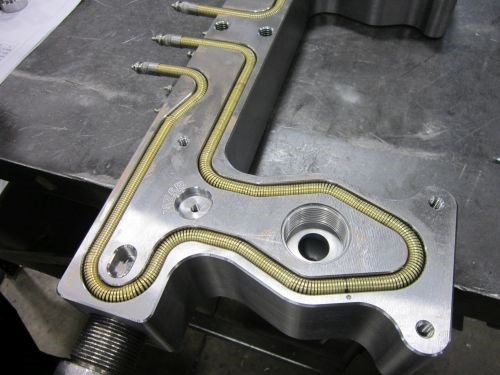Improving Hot Runner Performance
Thanks to new types of heaters and investments in thermal imaging technology, this company can design smaller systems that heat up faster and more uniformly.

Successful moldmakers are always looking to improve, but that would be much more difficult if their technology suppliers weren’t doing the same thing. During a recent visit to Plastic Engineering & Technical Services (PETS), I learned about some major changes the supplier has made in the design of its hot runner systems, all of which are manufactured at its Auburn Hills, Michigan headquarters facility. “We’ve redesigned everything from top to bottom in the last three years or so,” says Steven Hinderer, global sales manager. “They’re smaller, they heat up faster, and the heating is more uniform.”
Hinderer attributes much of the gain to investments in camera and software technology for thermal imaging. As a result, determining how a hot runner will perform is a much faster and easier process compared to years past, when systems had to be probed. Faster thermal studies, in turn, enable the company to arrive more quickly at better designs. As one result of such studies, the company replaced previously used band-style nozzle heaters with systems that provide more uniform temperatures, as shown in the thermal map above. “We’ve been using these for a few years, and we haven’t had a single one burn out,” Hinderer adds.
That’s not the only type of heater that’s been replaced. The company has also switched from pre-bent manifold heaters to flexible models like the one shown below. These heaters can be ordered in the needed length and arranged as-needed to suit virtually any manifold geometry. The result? Less inventory, and reduced risk of delays associated with systems not fitting together properly. Additionally, the systems attach to channels via grooves machined with a special cutter, a configuration that makes them both easier to install and more stable than previous models.







.jpg;maxWidth=300;quality=90)






